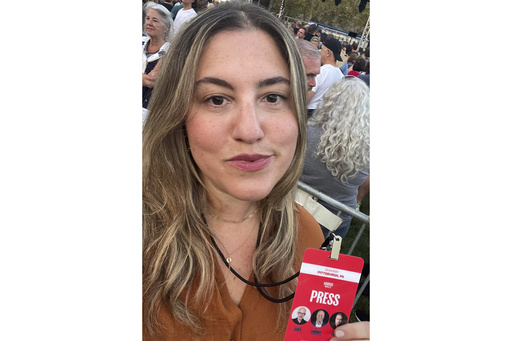
The initial report regarding the Trump administration’s subsequently rescinded initiative to halt federal loans and grants spending did not originate from a mainstream media outlet, but rather from a journalist working independently from her Brooklyn apartment. Marisa Kabas’s recent scoop marked a significant development for a growing group of freelance journalists who are carving out their paths in the industry. Many in this burgeoning field have transitioned from traditional media roles or are new entrants who find conventional career avenues uninviting or unattainable.
In an interview, Kabas expressed that the week had been transformative for her career. “In a sense, my job has changed overnight,” she remarked. Last Monday, while going through her emails at her kitchen table, a contact sent her a memo from the Office of Management and Budget announcing the freeze. Although Kabas operates her own site, The Handbasket, she opted to share a screenshot of the memo on the social media platform Bluesky to amplify its reach.
After sharing the news, she experienced considerable anxiety, which prompted her to take a walk in the cold night air. While she firmly believes in the value of independent journalism and her own role within it, she acknowledges that many people only recognize news as credible when it comes from a well-established outlet. About three hours later, The Washington Post published their story, acknowledging Kabas’s contribution.
The outcry over the directive led to the administration retracting its order just two days later, underscoring the impact of her reporting.
Kabas, now 37, has navigated various positions in journalism and public relations, freelancing for platforms like MSNBC.com, The Huffington Post, and The New Republic. She launched her own website in 2022 for personal writing and committed fully to journalism the following year. One of the benefits of her independent work is her ability to write about topics that matter to her personally. However, she faces the challenges of working solitary and relying solely on her efforts.
In her writing, Kabas has covered a range of subjects, including former Congressman George Santos and the raid on a local Kansas newspaper. Although she often leans towards personal essays, she doesn’t shy away from expressing her opinions, describing the OMB memo in a colorful manner. According to Syracuse University journalism professor Greg Munno, Kabas’s vibrant personality and style contribute to her ability to connect with both readers and potential sources.
The landscape of independent journalism is diverse, with many writers making a name for themselves on platforms like Substack and Beehiiv. For instance, Seamus Hughes created Court Watch to compile intriguing legal documents from across the U.S., while Heather Cox Richardson’s Letters From an American delves into historical contexts and their relevance in contemporary politics. Other notable names include Casey Newton’s tech-focused Platformer and Molly Knight’s sports commentary in The Long Game.
Recently, CNN’s Jim Acosta announced that he would start writing on Substack after deciding against a transfer to a less-desirable time slot. Former CBS News anchor Dan Rather has voiced his belief that independent journalism represents the future, noting the failures of legacy media to hold the powerful accountable.
Moreover, the rise of podcasts and social media influencers commenting on news further expands the definition of independent journalism. With traditional news outlets dwindling, there is a growing need for new voices. However, academics warn that the abundance of options raises concerns about credibility and accountability, particularly in an era of breaking news where a single person might take on multiple roles without the safeguards found in established organizations.
Critics, like Munno, question whether the market can sustain a significant number of independent journalists, citing concerns over public interest in news coverage.
Before her recent scoop, Kabas was earning what she considered a typical, though modest, income for a journalist. However, following the increased visibility from her scoop, her subscriber base surged, jumping from 800 to around 1,500 within a week. This development has led Kabas to reconsider her objectives in journalism, noting a new urgency to report on the nation’s evolving political landscape. She has even contemplated the possibility of hiring additional help to expand her efforts.
“I’ve transitioned from a reflective writer to breaking news coverage,” Kabas explained, noting that these two roles require very different skill sets.

